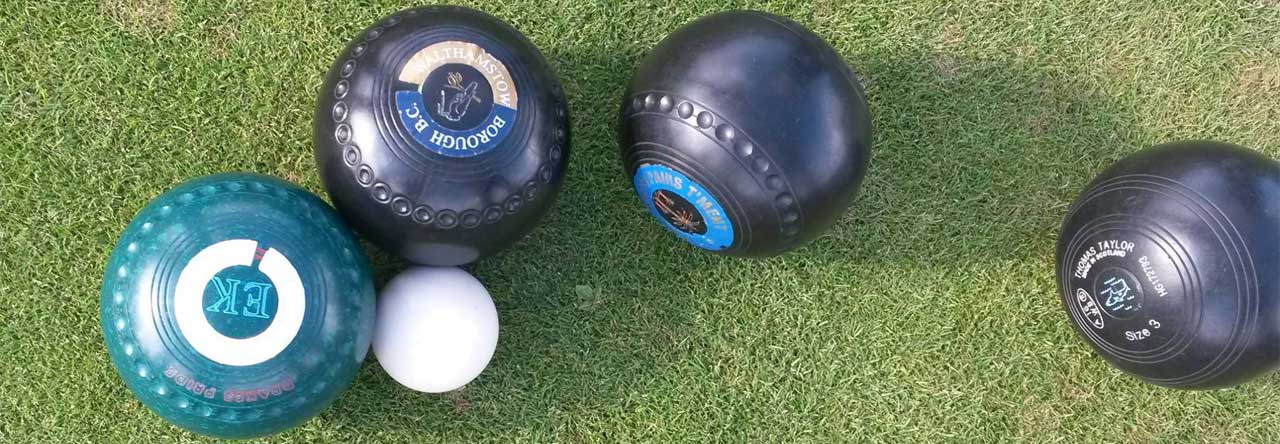Delivering the jack
Players generally toss a coin to decide which team gets to decide who goes first. The winner may “take the mat” (which is a rubber mat not dissimilar from the type of non-slip mat you might find in a hotel shower), or “give it away” and let the other team start. There are tactical reasons for doing one or the other, but in a casual game the winner of the toss will most likely take the mat.
In a team competition, and for this example let’s say there are three players (“triples”), one player is number one (“lead”), the other is second, and the third is “skip”. Each end will start with the skip at the other end of the green to the other players.
The lead who plays first will place the mat on the center line of the rink and roll the jack – the smaller white ball – down the green, and it must come to rest at least 23 metres from the front of the mat and not go into the ditch that surrounds the green. If it fails on either of these counts, the opposition skip can roll it back and have their lead make an attempt. If they fail as well it’s placed at maximum length, but the first lead can move the mat to adjust the distance between mat and jack. Generally in a roll-up (a casual game), if a jack has landed in an illegal position someone will just kick it to a nearby spot that is legal and get on with the game.
Delivering bowls
The order of play in a triples game is simple: first the leads deliver their three woods, alternating, then the seconds do the same, and the skips do theirs. It’s the same in pairs, except everyone gets four woods rather than three, and in a game of fours on each team you only have two woods to play. In singles you also generally play with four woods each and take alternate turns.
In triples, after the first twelve woods have been delivered (three each by each of the leads and three each by both seconds), the ones and twos swap ends with the skip so they can deliver their bowls, and so that the number twos can relay any changes in position or answer any questions the skip might have about new woods that have been bowled since they walked down the other end.
Agreeing the score
In all team games it’s the two players that bowl just before the skip that agree the score for an end between themselves. (In triples this will be the seconds, and in fours it will be the number threes.)
Usually it’s obvious which woods are closest, and as each one is agreed upon the player who is conceding the point can remove the bowl from the head and place it aside as counting, provided doing so would not cause another bowl to fall or move. Removing bowls as they score often make sit easier to judge distances.
If the players can’t agree which teams woods are closest – either for scoring shot or for other counting woods – then the same two players will either ask an umpire to measure distances (using special bowls measures) or one of them will measure, under the watch of the other.
Finishing the end
When the score is agreed and relayed to the skips, the lead of the team that lost the end is responsible for collecting the woods up, while the lead on the other side takes the mat and jack and begins the next end.
